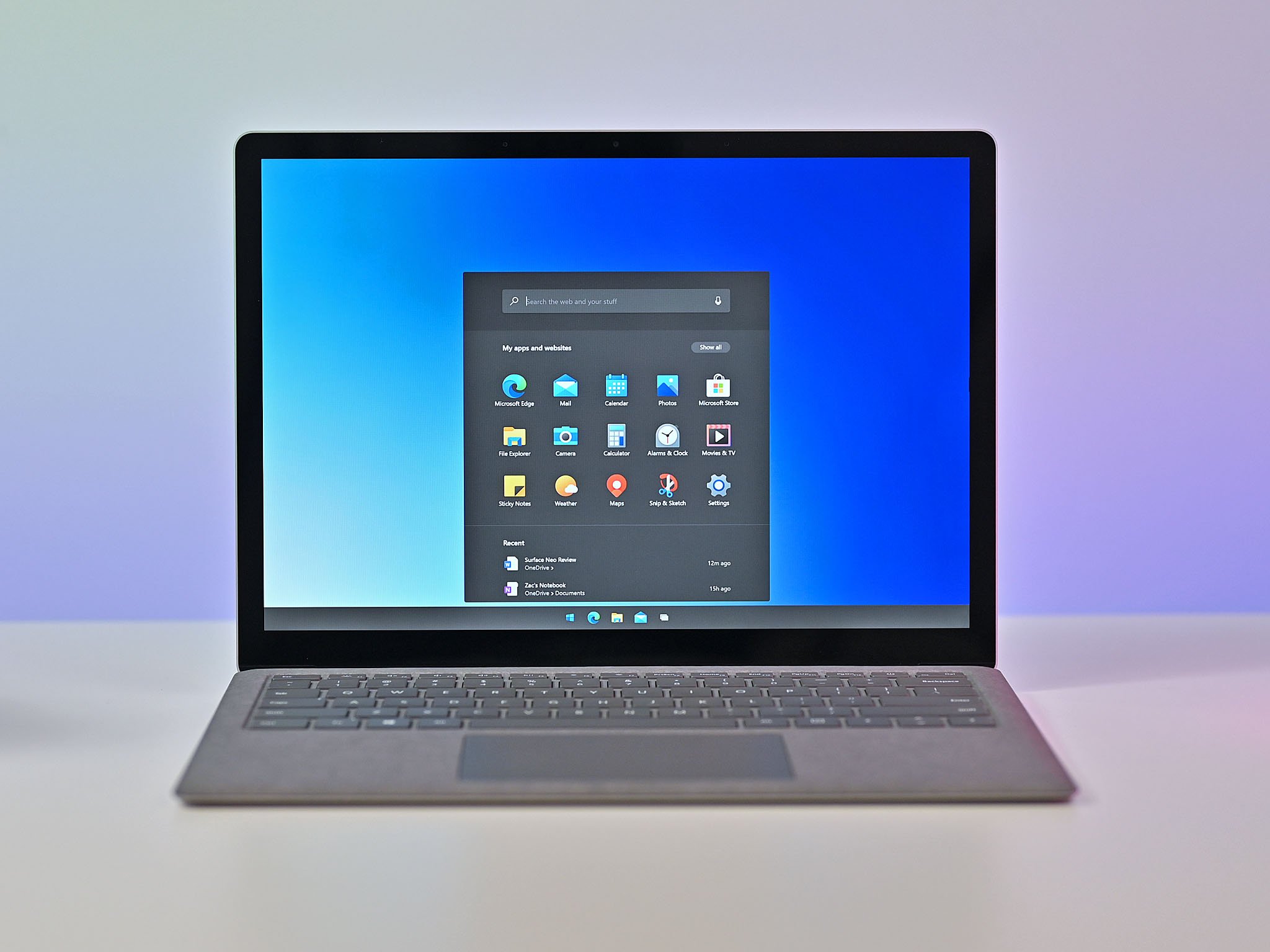Thinking about the terminology of "next generation" and how it applies to legacy Windows.
Earlier this week, Microsoft's chief product officer Panos Panay dropped a brief yet tantalizing tease that something big is on the way for Windows by referring to what's next as "the next generation of Windows." Microsoft hasn't used terminology like that since the debut of Windows 10 in 2015, and that was because Windows 10 was a new operating system replacing the previous one, backed by a huge marketing campaign focused on getting users to upgrade to the shiny new Windows.
Therefore, Panay referring to "the next generation of Windows" is a much bigger deal than you might think because it's terminology Microsoft should want to avoid now that Windows 10 is the "last version" of Windows that is updated as a service. You can't have a next generation of Windows if Windows 10 is the last version. So, what is Panay referring to? Let's put our thinking caps on.
Is it Sun Valley or Windows 10X?
I think that this "next generation of Windows" refers to both Windows 10X and Microsoft's upcoming Sun Valley update for Windows 10. On the Windows 10X side, things are self-explanatory. Windows 10X is built on a brand new, modern core without all the legacy bloat of "big" Windows, and can easily be categorized as the true next generation of Windows built from the ground up with new user experiences and modern workflows in mind. But 10X isn't ready for mainstream markets yet.
On the other hand, Windows desktop is still one of Microsoft's biggest products, and that isn't going to change because Windows 10X is here. I can't imagine a world where Windows 10X takes over as the 'mainstream' version of Windows for at least another five years, and that's being generous. So Microsoft can't ignore the best Windows desktop PCs, even if it wanted to.
That's where Sun Valley comes in. Microsoft itself has said that it's planning a "sweeping rejuvenation" of Windows, which will include a modern and consistent UI design, new features, and will make the Windows desktop something that people want to use again. Windows 10 today isn't the prettiest bit of software out there and it's not the easiest to use. This often comes to the detriment of Surface, which strives to build minimalistic yet functional PC hardware.
I reckon Panay wants big Windows to complement Surface hardware in ways that it just isn't doing right now, and that's what Sun Valley is able to bring to the table. Of course, most of the improvements coming to Windows with Sun Valley will be applicable to all PCs running Windows 10 today, but from Microsoft's perspective, their hardware and software can finally ship as one united product that go hand-in-hand.
A marketing strategy?
The "next generation," unfortunately, is likely nothing more than marketing terminology designed to get customers to upgrade or buy new PCs with Sun Valley or Windows 10X preinstalled later this year and into 2022. It's phrasing that tells the world that Windows is back and still relevant, and tricks you into wanting a new PC.
It wouldn't make much sense to call just Windows 10X the "next generation" while similtaneously delivering this big Sun Valley update for Windows 10 desktops. It would undermine Sun Valley and ultimately confuse customers. That's why I think "next generation" refers to both Sun Valley and Windows 10X.
Existing Windows 10 PCs will likely still get updated to this next generation just like previous versions of Windows 10, and Windows 10X will be what's exclusive to new PCs. I do think that Sun Valley will serve as a spiritual Windows 11, just without the new name or changes to licensing.
Overall, I think it's a combination of Microsoft's efforts with Windows 10X, as well as a huge push to get legacy Windows back into the spotlight with a shiny new release designed to keep the OS relevant in a world driven by mobile platforms. I'll be surprised if it ends up being a new version of Windows with a new name that costs money to upgrade to like in the old days.
This is all speculation, of course. It's fun to wonder, and I think it's going to be super interesting to see what Panos Panay and his team has planned for Windows later this year. It's starting to feel like Windows is important to Microsoft again, and that's a good thing.
Also remember that the version of Windows 10 scheduled to ship at the end of this year will be Panos Panay's first real version of the OS to ship under his leadership, so it's no surprise to hear that he has big plans in store for the platform. What are your thoughts? Let us know in the comments.


No comments: